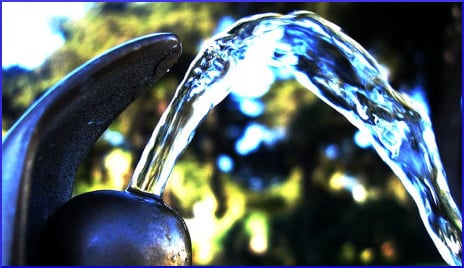
Hydration for Health (H4H) is a group with a mission: to convince the world that the healthiest way to hydrate is by simply drinking water. Their method is to share educational materials, practical tools, and scientific research. Here is the crux of their message:
Nutritional advice typically focuses on food intake. Yet, the quantity and quality of the fluids we drink every day can have a significant impact on our well-being and long-term health. Therefore, one of our primary challenges is to communicate the fundamental need for healthcare policymakers and practitioners to proactively provide healthy hydration advice.
The H4H website provides a page of information about obesity and healthy hydration, complete with 22 source references. It mentions the huge risk that obesity poses to a large number of people worldwide. Fluid intake influences a person’s metabolic system and the likelihood of straying into overweight or obesity. How much water does a person need? It depends, and math is involved, but thanks to H4H there is no need to find the calculator, because a handy chart is provided.
Water is the main ingredient in us. The body needs water as the medium in which other elements can mingle and react. Without it, we couldn’t have the blood river that takes useful molecules where they need to go and carries harmful substances to the disposal plant. Additionally, we need water for temperature regulation.
Things to drink other than water
No question, clean water is definitely the best thing to drink. But sometimes people want a little flavor and maybe even some nutritional value. Stay away from iced tea sold in bottles or cans, because it might contain as much sugar as soda pop. Tea that comes as a powdered mix is not only inexcusably expensive, but stuffed with sugar.
Childhood Obesity News has had plenty to say about energy drinks, which wear a deceptive aura of virtue. Energy makes you active, and activity is good, right? Not always. Activity inspired by being jacked up on sugar is nothing to write home about. Speaking of excessive sweetness, rice milk is not such a great idea either, no matter what the label says. It’s sheer carbohydrates, and a cup of it contains 92 calories worth of sugar even when none has been added. Instead, many experts recommend unsweetened almond milk.
Misunderstood
Juicing seems to be a misunderstood practice. In many cases, the skins of fruits and vegetables are meant to be consumed along with the insides. But juicing often involves taking the skins off. Instead, Dr. Christopher Mohr recommends,
Make a healthy smoothie that blends the entire fruit and/or vegetable so you … get those vitamins, minerals, and other nutrients along with the fiber. Add a scoop of whey protein, blend in some dairy milk, unsweetened almond milk, or water and you’ll have a perfect breakfast energy drink.
Dr. Julie TwoMoon is a juicing enthusiast, but with reservations and caveats. Commercially available juices, she says, have been subjected to a pasteurization process such that “all enzyme and vitamin function has been rendered neutral.” The vegetables have to be raw, and the juicing needs to be done in the moment.
Your responses and feedback are welcome!
Source: “Our mission,” H4initiative.com, undated
Source: “Healthy hydration and obesity,” H4initiative.com, undated
Source: “Water requirements for daily life,” h4hinitiative.com, undated
Source: “10 Surprising Foods Making You Fat,” Fitbie.com, undated
Source: “5 Foods You Think Are Healthy—But Aren’t,” MensHealth.com, 02/27/14
Source: “Dr. Julie’s Top 7 Misconceptions Of The Health Food Store World,” SevenDirectionsMedicine.com, 03/30/14
Image by darwin Bell

 FAQs and Media Requests:
FAQs and Media Requests: 











